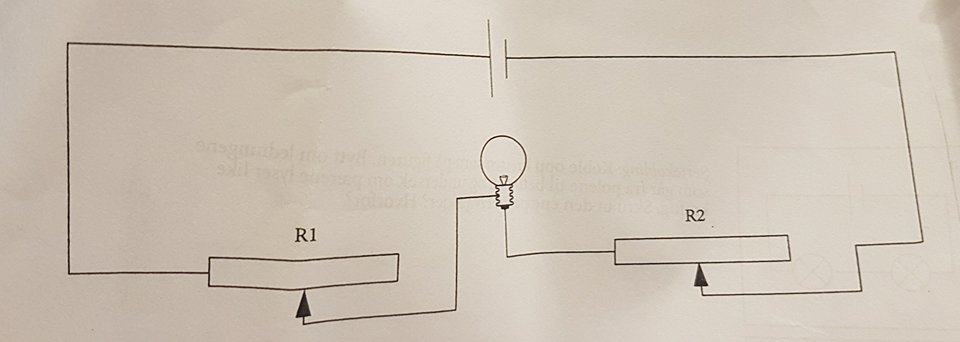Can someone help me with this task?

- If the resistance in R1 becomes smaller, does the brightness of the bulb increase, decrease or remain unchanged?
- If the resistance in R2 becomes smaller, does the brightness of the bulb increase, decrease or remain unchanged?
- If the resistance in R1 becomes bigger, does the brightness of the bulb increase, decrease or remain unchanged?
- If the resistance in R2 becomes bigger, does the brightness of the bulb increase, decrease or remain unchanged?

- If the resistance in R1 becomes smaller, does the brightness of the bulb increase, decrease or remain unchanged?
- If the resistance in R2 becomes smaller, does the brightness of the bulb increase, decrease or remain unchanged?
- If the resistance in R1 becomes bigger, does the brightness of the bulb increase, decrease or remain unchanged?
- If the resistance in R2 becomes bigger, does the brightness of the bulb increase, decrease or remain unchanged?
1 Answer
Mar 22, 2018
When the resistance decreases, the current increases
Explanation:
By Ohm's Law, V = IR. So, if the resistance decreases, the current increases. Therefore there are more electrons per second flowing through the bulb and it will get brighter.
The opposite will happen if the resistance increases and the brightness of the bulb will decrease.

